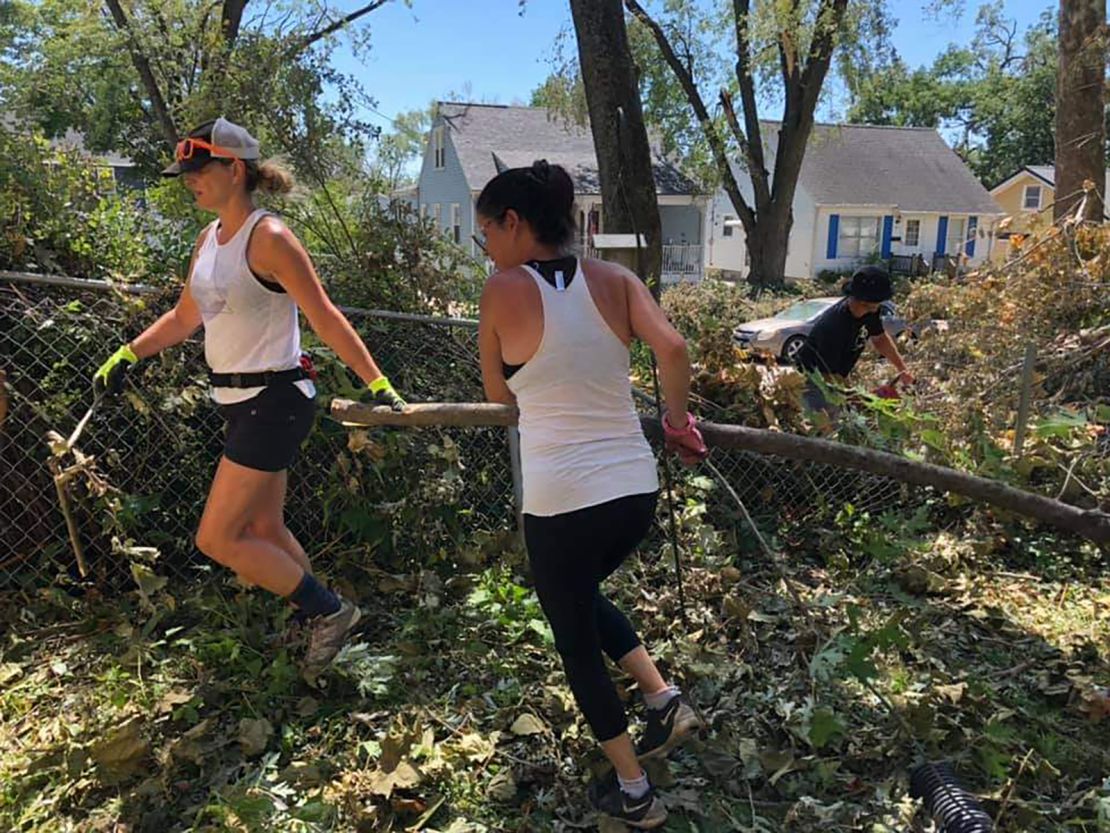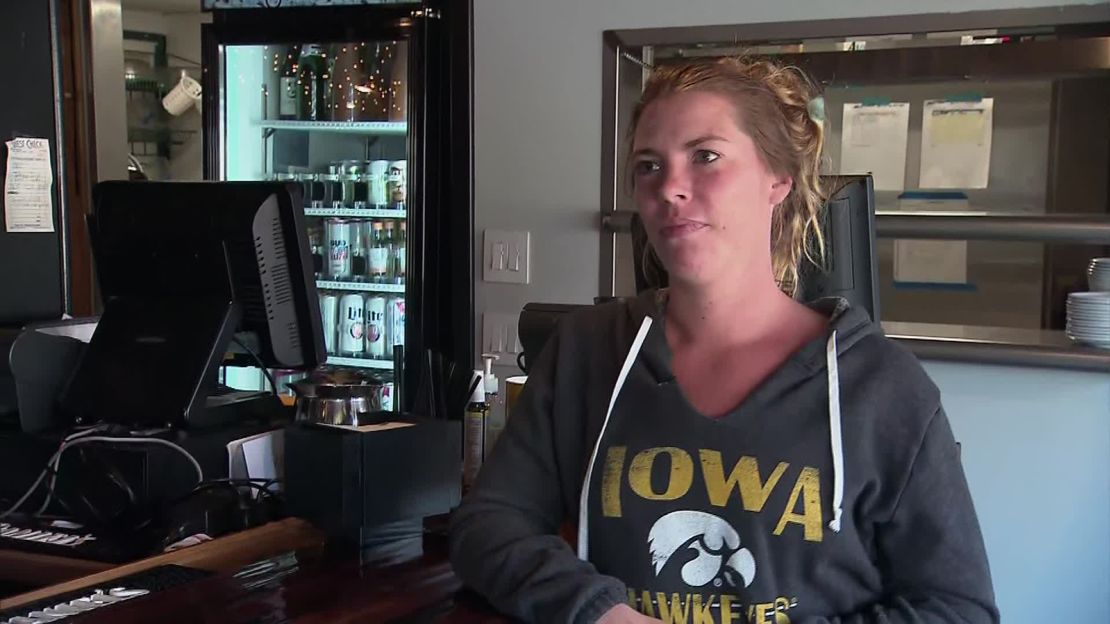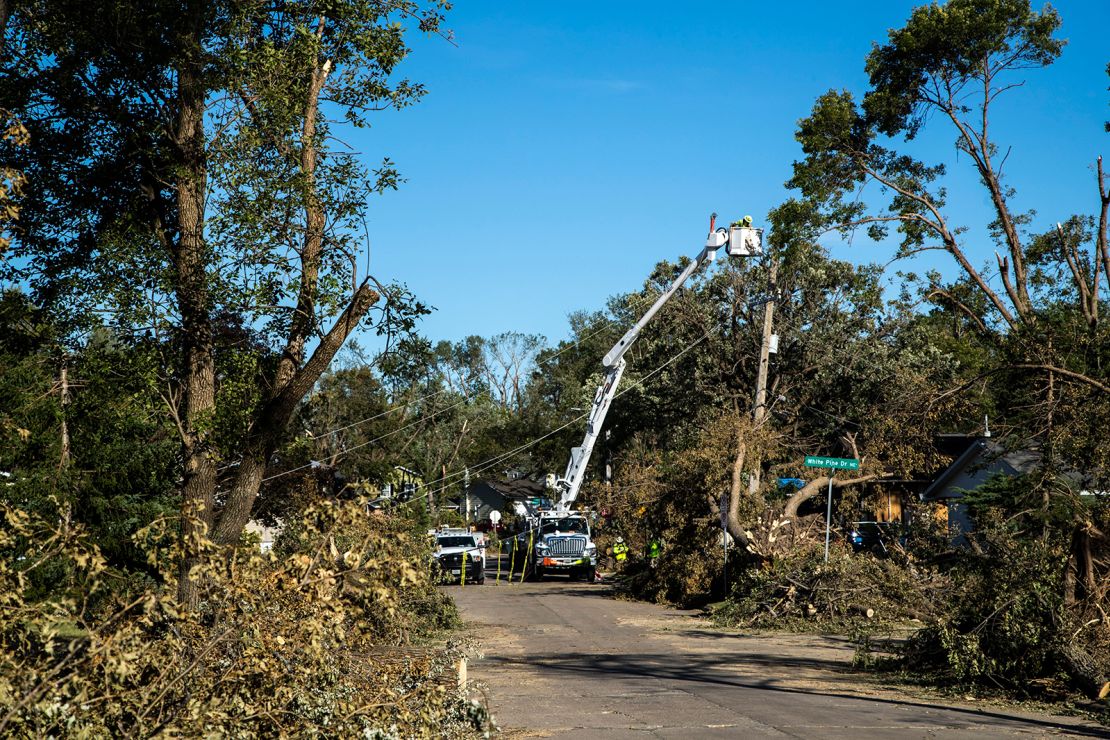Every Wednesday night, Danielle Hecker is part of a bike club that rides the streets of Cedar Rapids, Iowa. But lately, the group of about 20 people isn’t out leisurely enjoying late summer evenings.
Instead, the group is carrying chainsaws to help neighbors and people they don’t even know remove destroyed trees almost two weeks after a massive windstorm wreaked havoc all over Iowa.
“We’ve just been cutting people’s trees down in their yard because the insurance isn’t going to cover that and we’ve been taking care of that and we’ve been going through like a swarm of locusts taking all these trees down,” Hecker told CNN.

The derecho covered an area nearly 800 miles wide in the Midwest with hurricane-force winds topping 100 miles per hour.
It lasted 14 hours, destroying or severely damaging thousands of homes, schools and businesses while uprooting countless trees that had stood for over a century, helping take power lines down with them.
An emergency declaration signed by President Donald Trump on Tuesday will send $45 million in assistance, but it’s a small portion of the roughly $4 billion requested by Republican Gov. Kim Reynolds. On Thursday, the governor’s office reported that additional funding had been approved for the Cedar Rapids area under the Federal Emergency Management Agency’s Individual Assistance Program.
Some area residents say it likely still won’t be enough to help everyone rebuild.
“We try to get lunch coordinated, but were exhausted by 5 o’clock,” Hecker said. “We can’t do it for 13 hours a day and then we’re just tired and then we go home to a house without power, without air-conditioning. Without hot water. I didn’t have a shower for seven days. You’re getting sun burn.”
The storm knocked out power to more than 1 million people in the Midwest. While most of the power has been restored, Cedar Rapids was one of the hardest hit cities.

Storm ‘just hammered and hammered’
Nikki Wims works at a Cedar Rapids bar and says she’s never seen any storm like this before.
“It was like the whole storm that was 70 miles across was a tornado. The whole thing,” she said. “And it just hammered and hammered and hammered.”
Wims says even though the emergency sirens went off about 20 minutes before the storm hit, she believes there wasn’t enough preparation for a storm this size.
“I was in my car. I got down underneath my floorboard and covered my head … this is real, this is crazy. We just rebuilt from the flood of ’08 and now we are going to be doing it all over again.”
Wims says she was looking forward to taking her 5-year-old son to his first day of kindergarten, but is unsure if his school even has their power restored. The stress has taken its toll, she said.
“This has been honestly the hardest year of my life. I feel like we just got comfortable to where we have recovered and our city was just thriving again and we have been absolutely decimated.”
Pausing briefly to welcome a familiar face into the bar, Wims says the combination of Covid-19, the storm and loss of power have all taken their toll on residents.
“It’s getting to the point where it’s unbearable. We just had the shutdown. We were shut down for 13 weeks, we were at home and I mean I work here and we were fully shut down. We were back for maybe a month and a half and now this? Now we’re handing out meals for free and people can’t work because they don’t have power. They don’t have cell phones, zero service, they don’t have hot water.”
A ‘land hurricane’
Cedar Rapids Mayor Brad Hart said the storm and the damage left in its wake was unprecedented for the city.
“I lived in Houston and I lived through some hurricanes, so some describe this as a land hurricane where we had these sustained winds for 45 minutes. It just didn’t stop,” he said. “And that doesn’t happen in Iowa. We have tornadoes, and the path of tornadoes … is much more narrow.”

Hart said the destruction was made worse due to the width of the derecho.
“This wiped out our entire county,” he said. “There was no power in the city and much of the county, people didn’t have cell service. The streets were impassible. It was horrific.”
With utilities companies working around the clock to restore electricity to about 12,000 customers still without power, hot water and air conditioning should hopefully be back on for everyone soon.
But as Hecker recounts the day the storm hit, rebuilding efforts and the memories of the so-called land hurricane hitting Cedar Rapids are sure to last much longer.
“We watched it from the basement, we had a window and we were just seeing our power lines just blowing by,” she said. “I have never gone in the basement on purpose (for a storm) since I was a child and my mother made me.”





